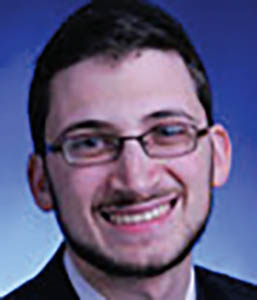
Our Sages teach us that Sefirat Ha’Omer is a time for introspection and reflection. As we prepare to perfect ourselves to receive the Torah on Shavuot and as we are demonstrating aveilut, mourning the deaths of 24,000 students of Rabbi Akiva, we must use the time for honest reflection. While most years I find myself reflecting on the same general topics and middot, something new has arisen recently that I think requires our attention.
The Netflix mini-series “13 Reasons Why” has become a very popular topic of conversation surrounding junior high and high school students over the past few weeks. The series is a fictional tale of a high school student who has had some terrible experiences, and before committing suicide leaves a tape behind explaining what each person in her circle has done to cause her pain. (Full disclosure: I have not watched it, nor do I plan to.)
Clearly there are many critical and relevant themes this miniseries addresses that can promote important conversations surrounding mental illness and suicide. On the surface, bringing this difficult conversation to the fore appears to be constructive. Suicide, in fact, is the second leading cause of death among 15- to 34-year-olds, and as such certainly is a topic that needs to be addressed.
However, there are aspects of the miniseries that go against the recommendations of mental health professionals and suicide-prevention models. Although the producers may have had the best of intentions, many mental health professionals are critical of the way this difficult topic was presented. (For more detailed information visit https://www.jedfoundation.org/13-reasons-jed-point-view.)
In reflecting a bit about this topic, it is not surprising that the number 13 was chosen for the fictitious story that is portrayed, as it is synonymous in many parts of the world with bad luck; there are buildings that will skip the 13th floor because of the bad luck associated with it.
Interesting, though, is that in Judaism that is far from the truth. Not only is 13 not an unlucky number, but it is an extremely prominent one that appears in several positive contexts.
A boy turns bar mitzvah, halachically obligated in mitzvot, when he is 13 years old. The Rambam lists the main precepts of our religious belief in 13 principles. There are 13 middot, hermeneutical tools, that Rabbi Yishmael teaches us, all necessary to plumb the depths of the Torah. And perhaps the most prominent of all are the 13 middot of Hashem, the 13 attributes of God’s mercy that we refer to as the “brit shlosh esrei,” the Covenant of the 13, as it includes a guarantee that if we connect to Hashem through these middot we will not be turned aside.
All of this from the number 13. Not only is it not associated with bad luck, but the opposite seems to be the case. It is a most fundamental number that relates to the most basic principles of Torah, understanding mitzvot and our relationship with Hashem.
Perhaps the word that best summarizes our perspective on 13 is the word ahava, love, which, you guessed it, has the numeric gematria of 13.
There are 49 days counted between Pesach and Shavuot, and the Baraita in Avot teaches us that there are 48 middot necessary to acquire Torah. Each day of Sefira we have the chance and responsibility to reflect and perfect one middah, and on the 49th day we can take full stock of all the traits in making our final preparations for Kabbalat haTorah.
Two of those middot stand out in our context, ohev et habriot, to love and care for others, and nosei b’ol im chaveiro, literally—to carry the burden with your friend. It’s a form of chesed, and its greatness is as it sounds: to take those burdens that are too heavy for your friend to carry and to share it—to carry it together.
Mental illness is prevalent; it is an illness like any other illness, but it’s not viewed that way. There is a stigma attached to it, and people suffering from mental illness, people suffering with spouses with mental illness, people suffering with children with mental illness are lonely, are isolated and in pain.
We need to understand that mental illness, like any other illness, was not caused by anyone and cannot be overcome by willpower alone. Suggesting that someone with mental illness should just get over it would be like telling someone with two broken legs to just put it together and stop limping.
Project Ometz, an initiative of Congregation Bnai Yeshurun, was recently founded as part of expressing love for others and wanting to be nosei b’ol im chaveiro. It provides peer support for parents who have a child suffering with mental illness, but more broadly hopes to keep the conversation about mental health alive, to remove the stigma, the barrier, making it so difficult for those suffering alone to reach out and speak with others and get the help they need.
To that end, and in particular in light of this miniseries being such a timely topic in our high schools, Project Ometz is launching a high school writing contest, “13 Reasons Why NOT.” High school students are encouraged to submit fiction or nonfiction essays, poems or first-person accounts of their perspectives on mental illness. The goal is to promote positive, healthy conversations about mental illness. Prizes will be awarded for top-ranked submissions. More details can be found at www.projectometz.org or by emailing projectometz@bnaiyeshurun.org.
By Rabbi Ari Zahtz
Rabbi Zahtz is the assistant rabbi at Cong. Bnai Yeshurun in Teaneck and co-founder of Project Ometz, established as a community-wide initiative to help parents cope when they have a child with mental illness.










